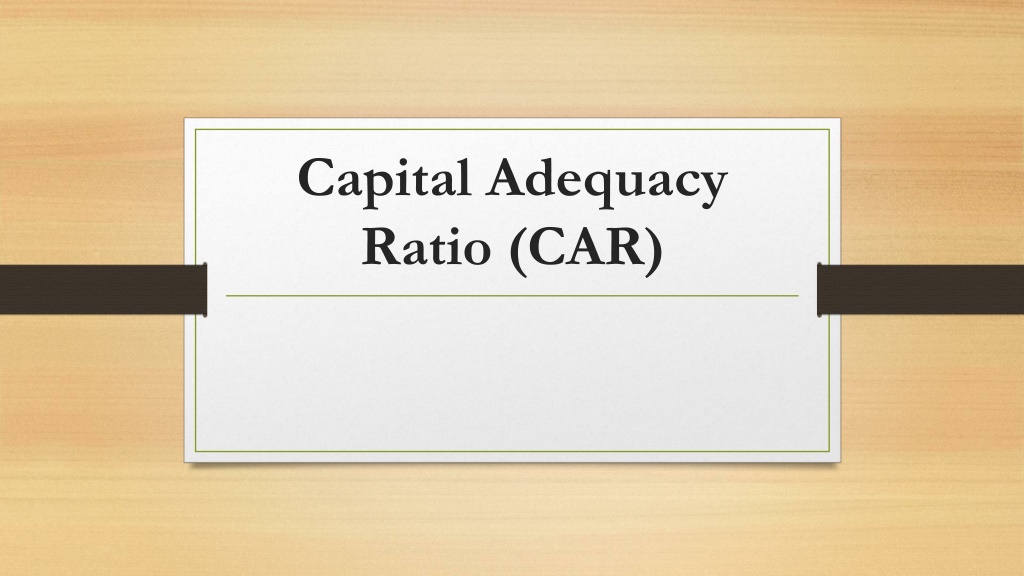Understanding Capital Adequacy Ratio (CAR) in Banking
Capital Adequacy Ratio (CAR) is a crucial metric in banking that measures a bank's capital against its risk. Also known as CRAR, it enhances depositor protection and financial system stability worldwide. The CAR formula involves dividing a bank's capital by its risk-weighted assets, comprising tier 1 and tier 2 capital. Tier 1 capital can absorb losses without halting trading, while tier 2 capital supplements protection during winding-up scenarios. Risk-weighted assets help determine the necessary capital based on risk exposure.
Download Presentation

Please find below an Image/Link to download the presentation.
The content on the website is provided AS IS for your information and personal use only. It may not be sold, licensed, or shared on other websites without obtaining consent from the author. Download presentation by click this link. If you encounter any issues during the download, it is possible that the publisher has removed the file from their server.
E N D
Presentation Transcript
Capital Adequacy Ratio (CAR)
Capital Adequacy Ratio (CAR) Capital Adequacy Ratio (CAR) is the ratio of a bank s capital to its risk. It is also known as the Capital to Risk (Weighted) Assets Ratio (CRAR). In other words, it is the ratio of a bank s capital to its risk-weighted assets and current liabilities. This ratio is utilized to secure depositors and boost the efficiency and stability of financial systems all over the world.
What is the Capital Adequacy Ratio Formula? The CAR or the CRAR is computed by dividing the capital of the bank with aggregated risk-weighted assets for credit risk, operational risk, and market risk. This is calculated by summing a bank s tier 1 capital and tier 2 capitals and dividing the total by its total risk-weighted assets. That is: Tier 1 CAR = (Eligible Tier 1 capital funds) = (Market Risk RWA + Credit Risk RWA + Operational Risk RWA) Total CAR = (Eligible Total capital funds) (Credit Risk RWA + Market Risk RWA + Operational Risk RWA)
CAR Formula: CAR = (Tier 1 capital + Tier 2 capital)/risk weighted assets
Tier 1 capital: This can absorb the losses without a bank being required to stop trading. Also called core capital, this consists of ordinary share capital, equity capital, audited revenue reserves, and intangible assets. This is permanently available capital and readily available to absorb losses incurred by a bank without it having to cease operations.
Tier 2 capital: This can absorb losses if the bank is winding-up and so gives depositors a lesser measure of protection. This consists of unaudited reserves, unaudited retained earnings, and general loss reserves. This capital cushions losses if the bank is winding up and is used to absorb losses after a bank loses all its tier 1 capital.
Risk-weighted assets: These assets are used to fix the least amount of capital that should be possessed by banks to lower the insolvency risk. The capital requirement for all types of bank assets depends on the risk assessment.























